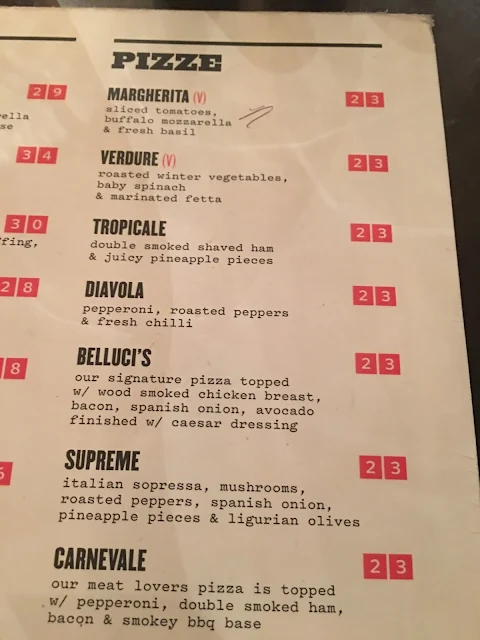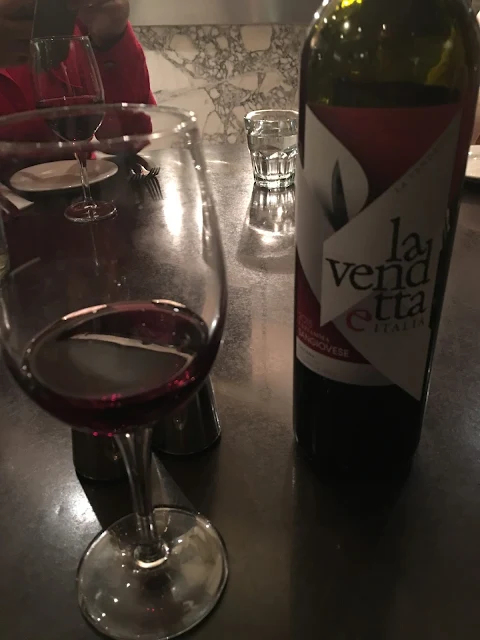 |
| Deep fried ice cream that comes more like a wrapped parcel, accompanied by muesli, cashews and strawberries. |
Sharing is always the best way to go with south-east Asian dishes, for not only does one get to sample each of the variety offered, but it also leads to a certain feeling of communion at the table. When the restaurant occupies almost a third of the pub and bar floor, the camaraderie from the licensed bar area can easily translate to a better feeling of gathering at the dining section.
The Shark Hotel in downtown Sydney can be accessed from both Pitt Street and Liverpool Street. This is ethnic Western Sydney transplanted for a rising population that reside in the city centre and so perhaps for a different demographic compared to its original base in Canley Heights. Here in the city, your diners can be more discerning, may have more disposable income or can devote more time after working hours.
 |
| I love this subtle but yummy dish - more of a Chinese styled roast duck, sitting in a concoction of soy, garlic and Thai sauces, garnished by aromatic herbs and Bok Choy. |
The quality of cuisine continues to maintained at high standards after all these years at the Holy Basil upstairs at the Shark Hotel. I recall this hotel used to be a hub of night life but these days I am not so sure.
The Sydney scene for Thai food away from Bangkok has grown, with a more experienced and sophisticated audience looking for unusual dishes, perhaps with more roasts and grills, with less coconut milk and with a sense of adventure to try variations of Thai standards like spicy salads, curries and noodle creations. Holy Basil was part of the interim movement away from what Aussies saw and understood as Thai food. They now face challenges from street food offerings with more interplay of Thai sauces, herbs and other ingredients.
 |
| Mango strips are heaped as a kind of salad on top of a deep fried whole Snapper. |
I reckon that Holy Basil still commands a good niche role between the suburban Thai and the new fangled Thai which have arisen in response to competition and fusion trends. If you just want a good feed with reliability, Holy Basil can still provide you that. The crowd on a recent Sunday evening seemed to reverberate with regulars, tourists and families. The spacious seating at the Shark Hotel outlet allows you to scan the tables for any exciting or popular dishes.
Alas, there was no pork knuckle or roast shoulder pork like those found at The Green Peppercorn at the Civic Hotel behind World Square. However, do try the marinated lamb cutlets and the roast pork belly cubes enhanced by garlic and chilli. A highlight for our evening was dabbling into the Laotian styled pork sausages - they are not oily, are rather more tasty than they look and are served with their unique sauce. Those who have eaten at the Green Peppercorn may recall the grilled ox tongue with a certain fondness - and the question is which one is better done, there or at the Holy Basil?
There was a reduced availability of unique sauces when compared with what are found at the Tawandang. There is no lack of dessert choices at the Holy Basil, although I was happy with the selections of fruit juices and smoothies.
Music can be played loud at times, for there is really no wall or partition for the restaurant from the rest of Shark Hotel. There is a lift for those who want to avoid the stairs but that evening when we were there, it was locked and we had to make a special request for usage, responded to professionally by the duty manager from the Shark Hotel.
 |
| Tom Yum Kung or with prawns - this was well made, with enough kick in the thicker soup. |
Head Chef Tony Inthavong runs a family run operation at the Holy Basil here.
My other dish recommendations at the Holy Basil at the Shark Hotel are:
Pad Thai with jumbo prawns, bean sprouts,crushed peanuts, eggs, chives, Spanish onions and chives.
Crispy chicken wings served with two sauces and made with a special recipe batter.
Satay chicken skewers served with a different kind of peanuty sauce.
Salt and pepper soft shell crab.
Holy Basil at the Shark Hotel visited is located at 127 Liverpool Street, near the corner with Pitt Street in Sydney CBD.
Opening hours are from noon to 3pm every day and for dinner, from 5pm to 10pm from Sundays to Thursdays and from 5pm to 11pm on Fridays and Saturdays.
Contact + 61 2 9283 8284
There is also a takeaway menu.



































